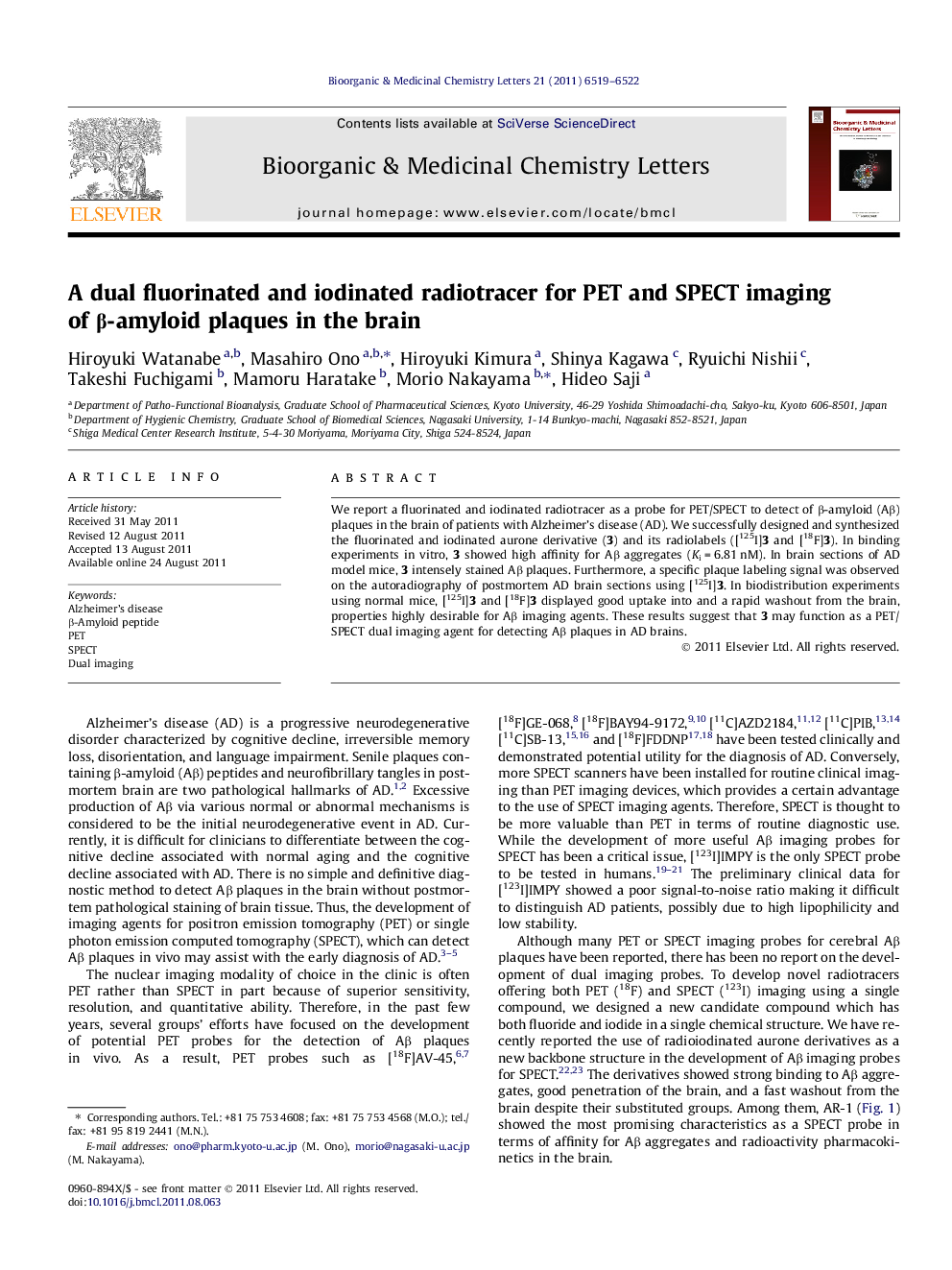| Article ID | Journal | Published Year | Pages | File Type |
|---|---|---|---|---|
| 1370452 | Bioorganic & Medicinal Chemistry Letters | 2011 | 4 Pages |
We report a fluorinated and iodinated radiotracer as a probe for PET/SPECT to detect of β-amyloid (Aβ) plaques in the brain of patients with Alzheimer’s disease (AD). We successfully designed and synthesized the fluorinated and iodinated aurone derivative (3) and its radiolabels ([125I]3 and [18F]3). In binding experiments in vitro, 3 showed high affinity for Aβ aggregates (Ki = 6.81 nM). In brain sections of AD model mice, 3 intensely stained Aβ plaques. Furthermore, a specific plaque labeling signal was observed on the autoradiography of postmortem AD brain sections using [125I]3. In biodistribution experiments using normal mice, [125I]3 and [18F]3 displayed good uptake into and a rapid washout from the brain, properties highly desirable for Aβ imaging agents. These results suggest that 3 may function as a PET/SPECT dual imaging agent for detecting Aβ plaques in AD brains.
Graphical abstractWe report a fluorinated and iodinated radiotracer as a dual imaging probe for PET/SPECT to detect of β-amyloid plaques in the brain of patients with Alzheimer’s disease.Figure optionsDownload full-size imageDownload as PowerPoint slide
